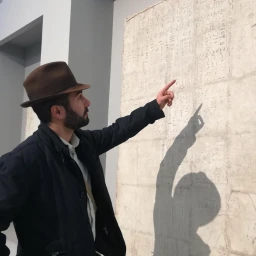During the International Conference on Coptic Studies in September 2012, held in Rome, scholar and university lecturer Karen L. King of the Harvard Divinity School presented the discovery of a papyrus. It contained a unpublished Gospel passage, named as “Gospel of Jesus’ wife”. The document came from a private collection. It had passed from hand to hand on the antiques market, and the previous owner was unknown. The papyrus, in Coptic language, contained a dialogue between Jesus and the disciples that could be considered as scandalous:
Jesus said to them: “my wife […] She will be able to be my disciple”.

The controversial passage of Jesus’ wife
However, the supposed Gospel passage caused an enormous discussion. As well known, the canonical gospels make no mention of a Christ relationship with a woman. Acknowledging the reliability of the finding meant a great scandal and a movement of historical and doctrinal revisionism. Karen L. King claimed that the papyrus, written in black carbon ink, dated back to the 4th century and was a transcription of a 2nd century Greek text1. Scholars established the dating on the basis of historical similarities. On the other hand, there is at least one apocryphal text from that period, the agnostic Gospel of Philip, which associates the name of Mary Magdalene with Jesus, albeit as koinônós, meaning companion or sister2. The carbon-14 examination, carried out at Harvard, nevertheless provided an average date between 659 and 8693.
In addition to the enormous media exposure the case has received worldwide, the first doubts about the find arose. Leo Depuydt, an egyptologist at Brown University, claimed that Professor King’s fragment was so fake that it “was ready for a Monty Python sketch“4. Early doubts stemmed from the fact that the papyrus was not pertaining to excavation works. Contrariwise, it came from the antiquities market, an unusual circumstance.
The “Gospel of Jesus’ wife” is a forgery
At the same time of the “Gospel of Jesus’ wife” presentation by the media, another unpublished papyrus appeared, attributed to the evangelist John. Christian Askeland, an expert on the Gospel of John, suggested that the author of both fragments was the same person. The “Gospel of John fragment”, moreover, was written in the Coptic Lycopolitan dialect, a language that scholars claim died out before the papyrus was dated5. Basically, both the “Gospel of Jesus’ wife” and the “fragment of the Gospel of John” were supposed to be forgeries.
After about four years of research on the fragment and a revealing investigation by the US magazine Atlantic, Professor King admitted that it was most likely a forgery. Journalist Ariel Sabar had discovered that the papyrus had belonged to Walter Fritz, a German-American businessman who had studied Egyptology in his youth. Fritz, a few weeks before the presentation of the papyrus at Harvard, had registered a site called “gospelofjesuswife”6. The man was able to make up a forgery of such good workmanship that it fooled several Harvard academics.
Samuele Corrente Naso
Notes
- Karen L. King, Jesus said to them, “My wife . . .”, A New Coptic Papyrus Fragment, Cambridge University Press, 10 April 2014. ↩︎
- Gospel of Philip, 55. ↩︎
- Noreen Tuross, Accelerated Mass Spectrometry Radiocarbon Determination of Papyrus Samples, Harvard University, dipartimento di biologia evoluzionistica umana, 2014. ↩︎
- L. Depuydt, The Alleged “Gospel of Jesus’s Wife”: Assessment and Evaluation of Authenticity, The Harvard Theological Review, Vol. 107, No. 2, 2014. ↩︎
- J. Pattengale, How the “Jesus’ Wife” Hoax Fell Apart, The Wall Street Journal, 2014. ↩︎
- A. Sabar, The Unbelievable Tale of Jesus’s Wife, in The Atlantic, 19 June 2016. ↩︎


